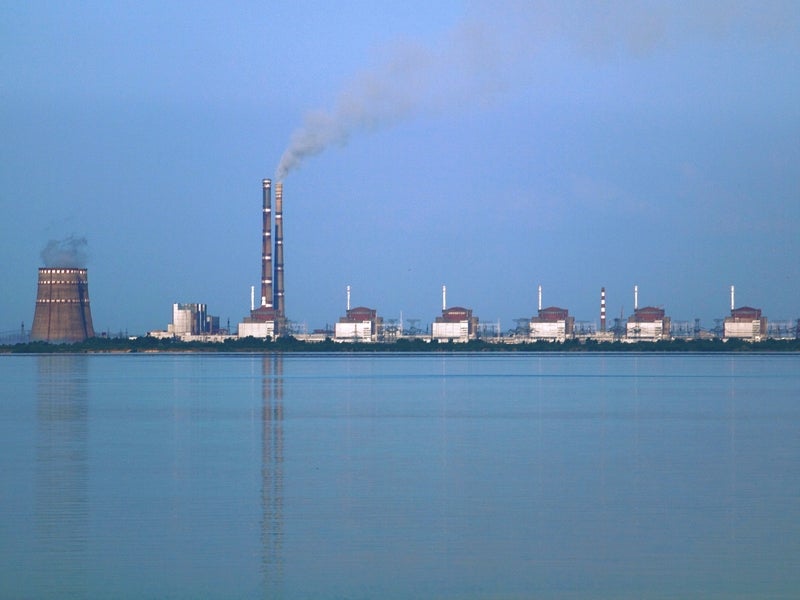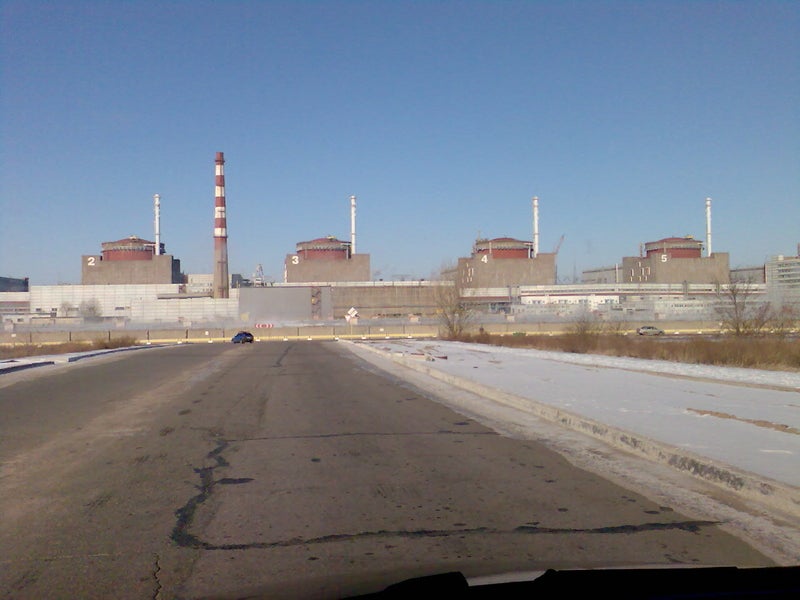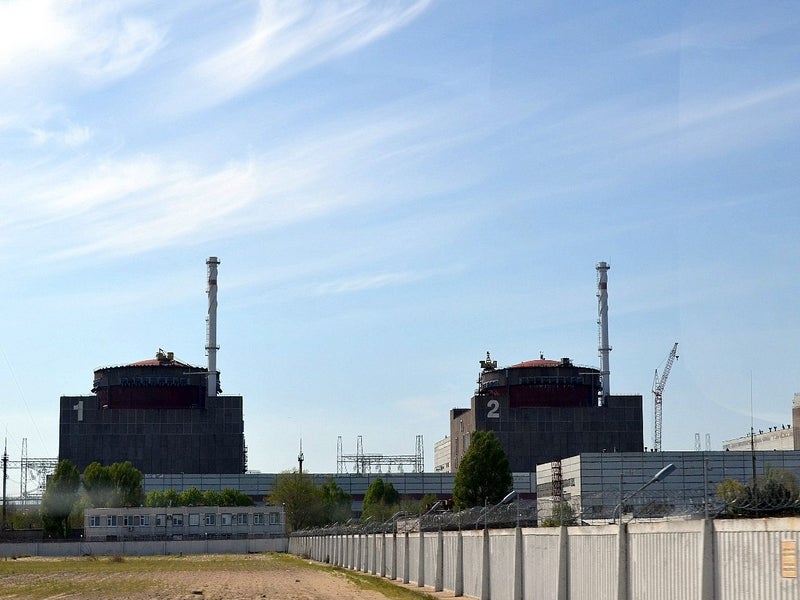The Zaporizhzhya nuclear power plant (NPP) is located near Energodar in south-eastern Ukraine. Having a gross electrical capacity of 6GW, it ranks as the largest NPP in Europe.
The facility is owned and operated by Energoatom, Ukraine’s state-owned nuclear energy generating company.
The Zaporizhzhya NPP comprises six 1000MW pressurised water reactors (PWRs) of Russian VVER design. The six power units were commissioned between 1984 and 1995.
Zaporizhzhya generates up to 42,000 gigawatt-hours (GWh) of electricity a year, contributing about 20% of Ukraine’s total electricity.
The cumulative electricity generation by the Zaporizhzhya NPP, since it produced its first power in 1984, had surpassed 1.23 trillion kilowatt-hours (kWh) by the end of 2021.
Russian military forces took control of the Zaporizhzhya nuclear power facility amid Russia’s invasion of Ukraine in March 2022. An administrative building within the power complex was set on fire without affecting the plant’s safety systems.
Zaporizhzhya nuclear power plant location
The Zaporizhzhya nuclear power plant is located near Energodar in the Zaporizhzhia province of Ukraine.
It is built on a 104.7ha-site on the left bank of the Kakhovka water reservoir on the Dnepr River, 400km south-east of the capital city Kyiv.
Construction of Zaporizhzhya NPP
Construction of the Zaporizhzhya nuclear power station started in 1979 and the first unit became operational in 1984.
Units 2, 3, 4 and 5 were commissioned in 1986, 1987, 1988, and 1989, respectively. The sixth and the last power unit of the Zaporizhzhya NPP came online in 1995.
Zaporizhzhya nuclear power plant make-up
The Zaporizhzhya nuclear power station comprises six identical power units, each of which is equipped with a VVER-1000 (V-320) presurised light water reactor and a K-1000-60/1500-2 steam turbine coupled with TVV-1000-4 electric generator.
Safety measures
Zaporizhzhya has deployed a comprehensive information and measuring system to monitor radiation condition within the plant complex as well as the area surrounding the plant.
The power plant also uses Westinghouse best estimate analysis of core operations-nuclear (BEACON) software for real-time monitoring, analysis and prediction of reactor core operations.
Spent fuel storage at Zaporizhzhya
The used nuclear fuel produced by the reactors at Zaporizhzhya is stored in cooling pools inside the reactor containments for up to five years. After cooling, it is loaded into containers and transferred to the onsite spent fuel dry storage facility (SFDSF).
Zaporizhzhya is the first and the only Ukrainian NPP to have its own SFDSF at the site. The State Nuclear Regulatory Inspectorate of Ukraine (SNRIU) granted a licence to build an onsite dry storage facility at the Zaporizhzhya NPP in July 2001.
Commissioned in August 2004, the Zaporizhzhya SFDSF has the capacity to store the spent fuel from all six reactors of the NPP over their remaining operational lives.
The SFDSF is designed with a storage capacity of more than 9,000 used nuclear fuel assemblies in 380 ventilated storage containers.
Power evacuation
The electricity generated by the Zaporizhzhya nuclear power plant is supplied the Ukrainian power grid through four 750kV transmission lines and one 330kV line.
The fourth 750kV overhead transmission line running 186km from Zaporizhzhya NPP to the Kakhovka substation was commissioned in November 2020.
The Kakhovka substation, located in the port city of Kakhovka in Kherson Oblast in southern Ukraine, is expected to play a crucial role in synchronising the Ukrainian power system with the European system.
Contractors involved
Russian engineering company AtomEnergoproekt was the architect of the Zaporizhzhya nuclear power plant.
The Ministry of Heavy Machine Building (Mintyazhmash) of the former Soviet Union supplied the reactors, while Kharkovsky Turbinny Zavod supplied the steam generators for the Zaporizhzhya nuclear power plant.
The reactors were manufactured by Izhorskiye Zavody, while Kharkiv turbine plant (now Turboatom) supplied the steam turbines for the NPP.
Westinghouse Electric is currently the fuel supplier for four reactor units of the Zaporizhzhya NPP, while Russia’s TVEL supplies fuel for the remaining two units.
Westinghouse also supplied its proprietary Beacon core monitoring system and was contracted to provide the accident, post-accident and hydrogen concentration monitoring systems for four units of the plant in September 2017.
Westron, a joint venture of Westinghouse and Ukrainian company Hartron, installed automated radiation control systems for the second and third units of the NPP in 2007.
The Kharkiv Institute Energoproekt (HIEP), Duke Engineering & Services (DE&S) and Sierra Nuclear Corporation (SNC) were engaged to design, build, test and operate the SFDSF at Zaporizhzhya.
HEIP served as a general consultant to oversee the design and construction of the SFDSF, while SNC was subcontracted by DE&S to design and supply the ventilated storage casks for the facility.
DE&S provided project development, logistics, construction supervision, quality assurance, and commissioning services for the SFDSF project.
ARAKO, a part of Rosatom’s mechanical engineering division Atomenergomash, supplied bellows sealed globe valves for the NPP.





